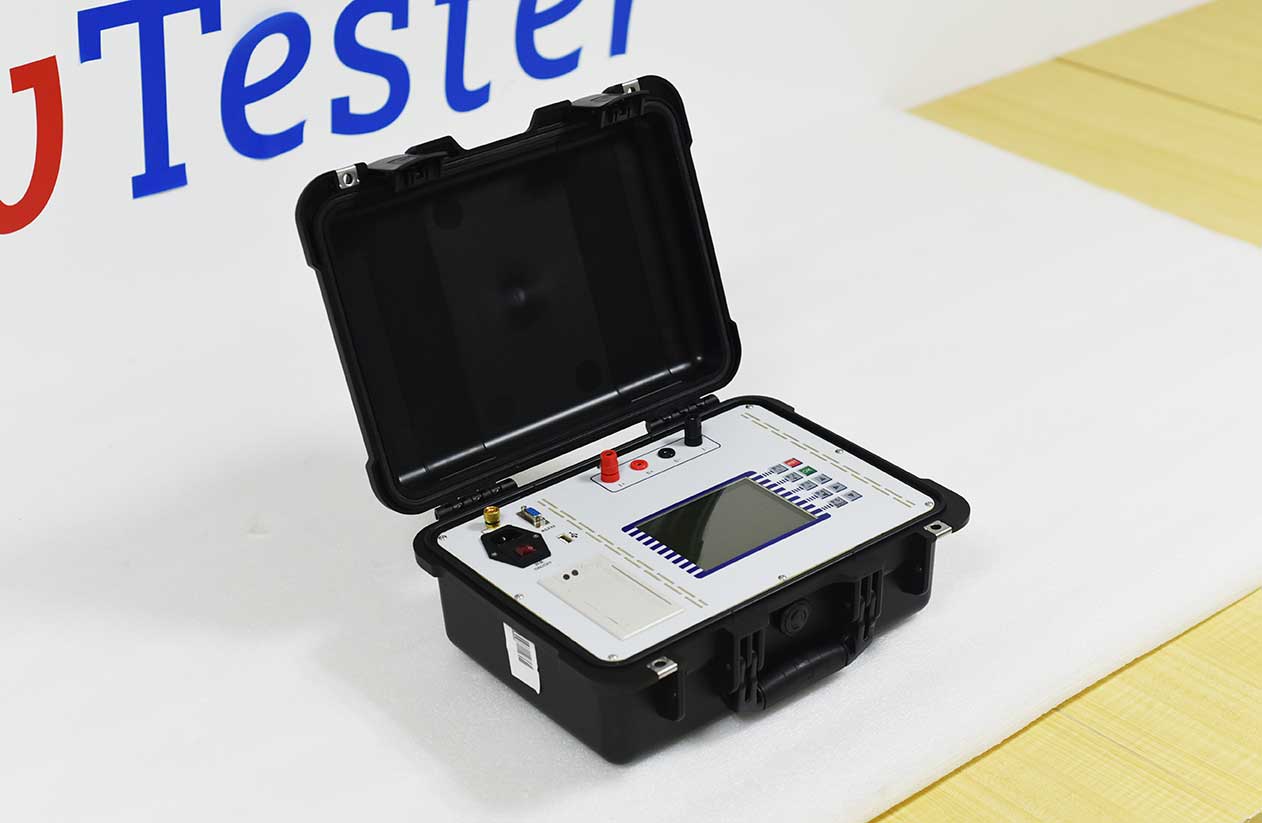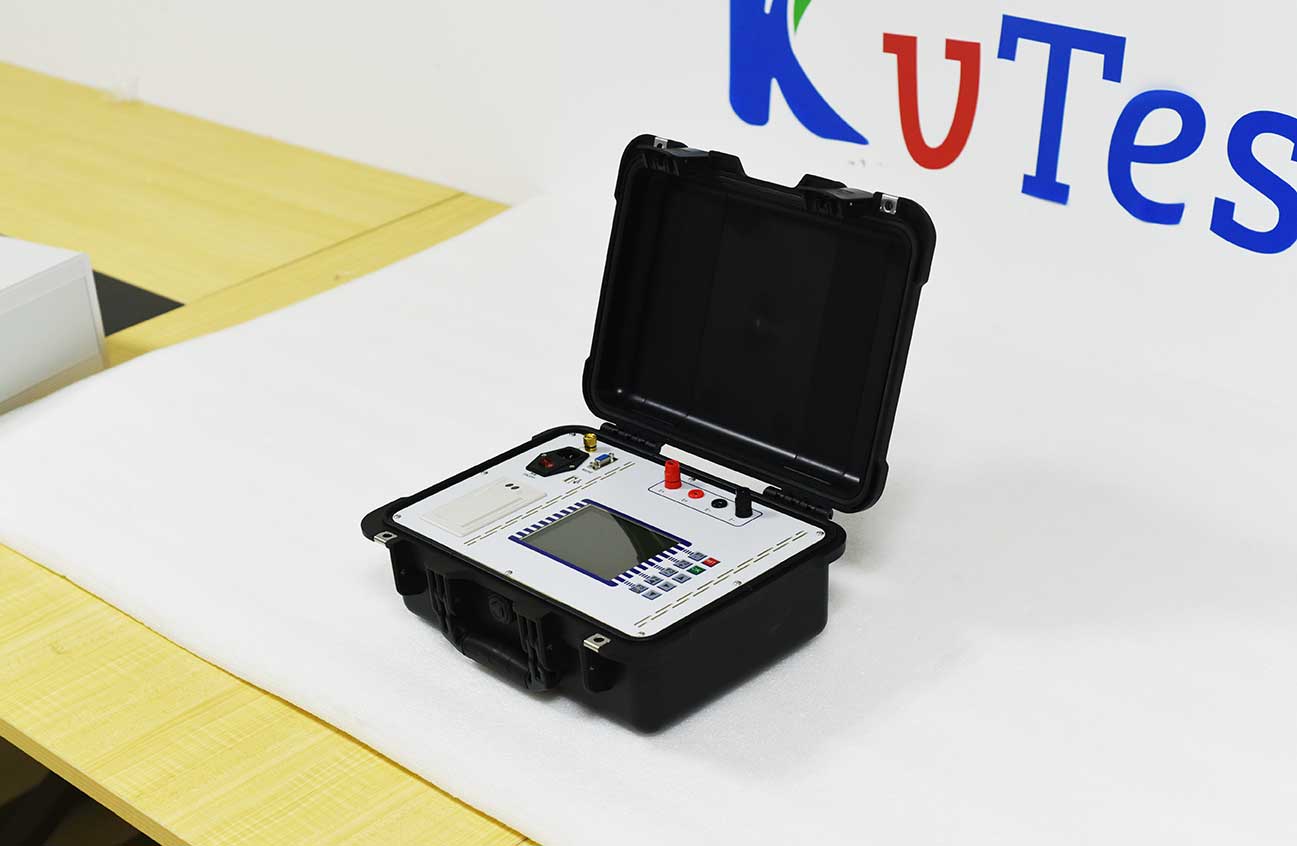The DC resistance tester is mainly used to test the DC resistance value of high-voltage electrical equipment such as power transformers. It has many characteristics such as fast testing speed, high accuracy, convenience, flexibility, and portability. It has always been a favorite equipment for many power workers, and there are many areas that need special attention during use. This article takes the KST-205A DC resistance tester as an example, Here is a brief introduction to the precautions for using a DC resistance tester.

1. When selecting the current, please refer to the range in the technical indicators column, and do not use it beyond the range or under range. When exceeding the range, the instrument remains in a "charging" state due to the current not reaching the preset value. When under range, the display shows "current too low". When these two states occur, confirm the range and select the appropriate current for testing.
2. Before disconnecting, be sure to wait for the instrument to reset and there is no current output before turning off the power before disconnecting.
3. When connecting the test clamp to the outgoing end of the transformer winding, it should be noted that the outgoing end is exposed to air for a long time, and the surface of the outgoing end is covered with a layer of oxide film. This oxide film may cause unstable or inaccurate measurement results. Therefore, when wiring, attention should be paid to cleaning the oxide film, or after connecting the test clamp to the outgoing end, forcefully twist the test clamp several times to scratch the oxide film to ensure good connection.
4. The short contacts of the three wires in the magnetic assistance method may have residual current when they are removed after discharge, and may ignite and discharge during removal, which is a normal phenomenon.
5. Pay attention to the range when using the magnetic assistance method. Because two high-voltage coils are connected in parallel and one is connected in series, 1.5 times the resistance of the high-voltage coil is added to the entire testing circuit, which needs to be converted into the selected range. If the output current cannot reach the set value or the output current is unstable when used beyond the range.
6. When selecting the current, please refer to the range in the technical indicators column, and do not use it beyond the range or under range. When exceeding the range, the instrument remains in a "charging" state due to the current not reaching the preset value. When under range, the display shows "current too low". When these two states occur, confirm the range and select the appropriate current for testing.
7. Before disassembling the wire, it is necessary to wait for the alarm sound to stop after the discharge is completed. It is necessary to wait for more than 10 seconds before disassembling the wire to ensure that the charge is completely released.
8. Before testing the no-load tap changer, it is necessary to reset it. After the discharge is completed, the alarm sound stops for more than 10 seconds before switching to the tap changer.
9. After measuring the inductive load, the test line cannot be directly removed to avoid endangering the safety of testing personnel and equipment due to inductive discharge. The output end of this machine is equipped with a discharge circuit. When the output is turned off, the inductance will release energy through the DC resistance tester. Only after the discharge indication is completed can the test wire be removed;
10. For unloaded voltage regulating transformers, it is not allowed to switch the tap changer during the measurement process;
11. If the power supply suddenly cuts off during the measurement process, the machine will automatically start discharging. Please do not disassemble the wiring immediately, wait at least 30 seconds before disassembling the wiring;
12. During measurement, other untested windings should not be short circuited to ground, as this may slow down the transformer magnetization process and prolong the data stabilization time;

Generally speaking, as a relatively conventional power testing equipment, the DC resistance tester has been put into the market for more than ten years, and the technology is relatively mature. However, in practical work, power workers should not take it lightly. Before using it, they need to read the manual thoroughly and pay attention to the above matters, so as to achieve twice the result with half the effort.
Kvtester Electronics Technology Co.,Ltd. is a high-tech enterprise specializing in power testing, testing, research and development, production, and sales of testing equipment. It has been engaged in the electrical testing industry for many years, and its products are of high quality. We welcome customers to come and purchase.






